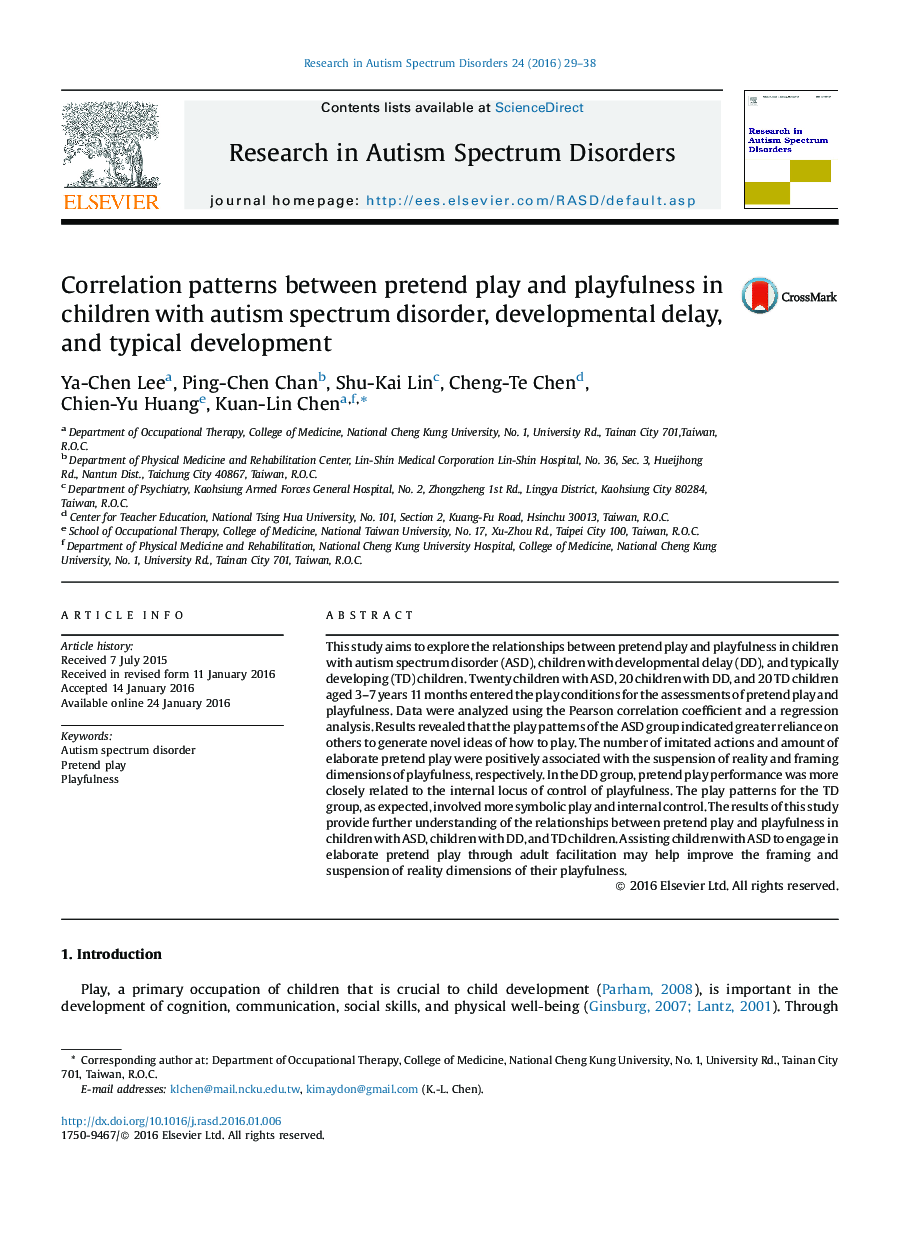| Article ID | Journal | Published Year | Pages | File Type |
|---|---|---|---|---|
| 369914 | Research in Autism Spectrum Disorders | 2016 | 10 Pages |
•Play patterns indicated reliance on others for play ideas in children with ASD.•The play patterns of ASD group in this study were closely related to their core features of autism, such as sociability and imagination.•Adult facilitation to increase the engagement in elaborate pretend play of children with ASD may be beneficial to the framing and suspension of reality dimensions of playfulness.
This study aims to explore the relationships between pretend play and playfulness in children with autism spectrum disorder (ASD), children with developmental delay (DD), and typically developing (TD) children. Twenty children with ASD, 20 children with DD, and 20 TD children aged 3–7 years 11 months entered the play conditions for the assessments of pretend play and playfulness. Data were analyzed using the Pearson correlation coefficient and a regression analysis. Results revealed that the play patterns of the ASD group indicated greater reliance on others to generate novel ideas of how to play. The number of imitated actions and amount of elaborate pretend play were positively associated with the suspension of reality and framing dimensions of playfulness, respectively. In the DD group, pretend play performance was more closely related to the internal locus of control of playfulness. The play patterns for the TD group, as expected, involved more symbolic play and internal control. The results of this study provide further understanding of the relationships between pretend play and playfulness in children with ASD, children with DD, and TD children. Assisting children with ASD to engage in elaborate pretend play through adult facilitation may help improve the framing and suspension of reality dimensions of their playfulness.
